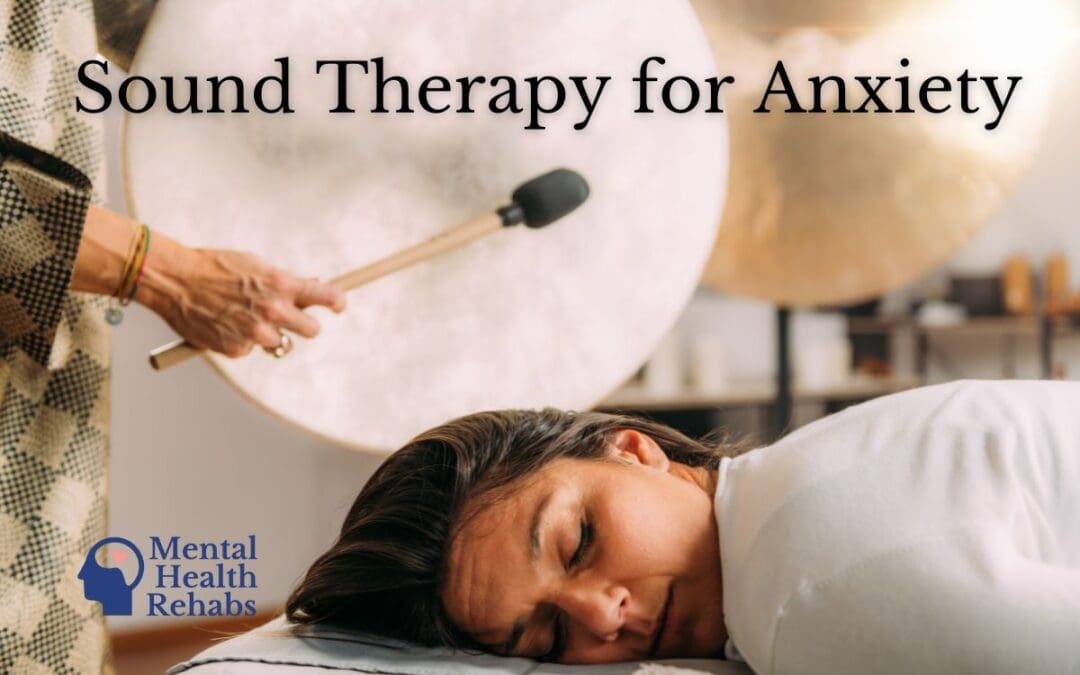Anxiety is one of the most common mental health conditions that affects millions of people worldwide. Traditional anxiety treatments such as medication and therapy can be helpful but have limitations. Sound therapy is a holistic approach to anxiety management that promotes relaxation via specific frequencies that alter our brainwaves. It has roots in ancient medicine but has recently gained mainstream popularity as an effective alternative treatment for anxiety, especially for people who have a hard time focusing on traditional meditation.
What is sound therapy?
Sound therapy is the use of specific sound frequencies to stimulate the brain and nervous system. It is a broader category for audio-based treatment techniques that also includes music therapy, sound healing, and vibroacoustic sound therapy. Despite these scientific-sounding names, sound therapy is an ancient practice and is believed to be as old as humanity itself. There are records of the Aborigines (indigenous Australians), ancient Egyptians, and ancient Greeks using music to heal the sick.
Chimes, drums, Tibetan Singing bowls, and chanting are common instruments used in sound therapy to create specific sound frequencies and vibrations, and at specific intervals. However, technology has enabled a more modern form of sound therapy that involves electronically-generated sounds.
Binaural beats are one of these newer forms of sound therapy. It involves headphones; the listener’s right and left ears each hear slightly different sound frequencies which come together to form a pleasingly synchronous third frequency. Other forms of sound therapy enabled by electronics include nature sounds and the various white, brown, and pink color noises.
Benefits of sound therapy for anxiety
Sound can have a profound effect on mood. The ear is closely tied to the nervous system and limbic system which is why some songs have the power to rev us up, making us feel energized and attentive, while others can help instill feelings of calm and relaxation. Sound is so powerful that patients who listen to calming music before surgery don’t need as many sedatives.
puts the body in a state of relaxation releasing feel-good hormones like serotonin and dopamine, which promote a sense of well-being and naturally reduce anxiety. Additionally, sound therapy has been found to activate the parasympathetic nervous system which is responsible for the body’s rest and digest response, the counter to the body’s fight or flight response.
Sound therapy has numerous benefits for health including:
- Decreased stress
- Lower blood pressure and heart rate
- Pain reduction
- Improved sleep
- Fewer mood swings
Many of the effects of sound therapy are natural counters to the negative effects of anxiety and stress, namely the sense of calm achieved from multiple physical and psychological benefits. Sound therapy is also an easily accessible anxiety treatment that does not require a prescription and can be accessed for free online through a variety of channels.
It’s non-invasive, has no known side effects, and can easily be used standalone or alongside traditional anxiety treatments such as medication or therapy. However, modern research on the effects of sound therapy is limited and should not replace any current anxiety medication or treatment without first being discussed with a medical professional.
What to expect from a sound healing therapy section
A sound therapy session can take several forms. It can be conducted with a practitioner or a self-guided practice, with live instruments or recordings, and may be preceded or followed by a guided meditation. The participant is usually sitting or lying down in a comfortable position and with minimal distractions around them. Comfort is key as sessions average around one hour, though longer sessions are shown to have greater benefits.
Using sound therapy for stress relief and management on your own
Incorporating sound therapy for anxiety into your daily routine is easy. Online platforms and mobile apps give access to its healing benefits without a doctor’s referral or even working with a professional and offer sound therapy meditations and music that can be accessed anytime, anywhere. Here’s how to incorporate it into your routine:
- Find a quiet space. Where you practice sound healing therapy is an important choice. It should be calm, quiet, and comfortable. Distractions, especially noisy ones, will prevent you from being able to focus on the sounds. This is less of a concern if you have good-quality noise-canceling headphones that can make it easier to practice sound therapy on the go.
- Pair with meditation, yoga, or meditation. Incorporating these other mindfulness practices can enhance the overall experience and effectiveness of treating anxiety.
- Try different sound therapy techniques. There are many forms of sound therapy available, featuring different instruments, durations, and formats. Try both in-person sound baths and recordings to see which you’re most responsive to.
If you’re curious about the benefits of sound therapy for anxiety, talk to a mental health professional today to learn more about this holistic approach to anxiety management.

